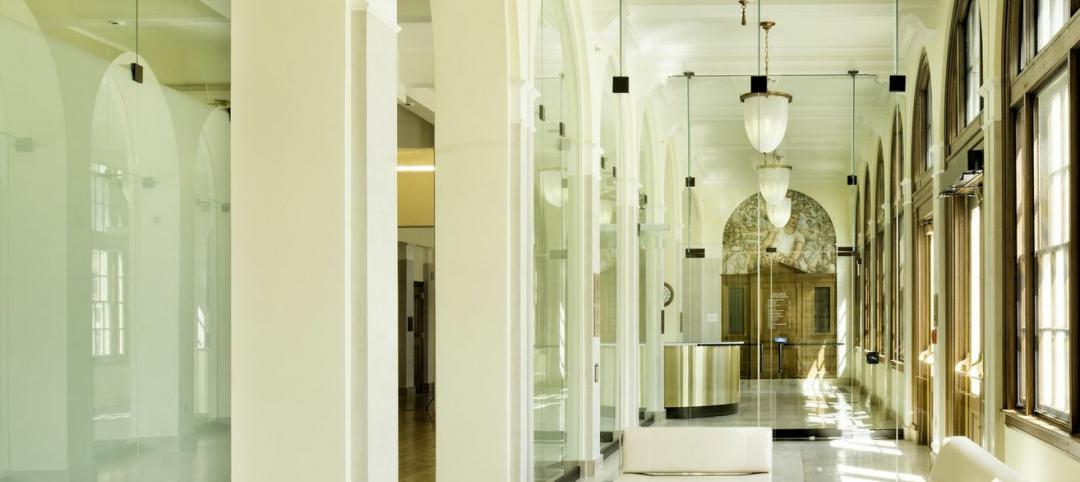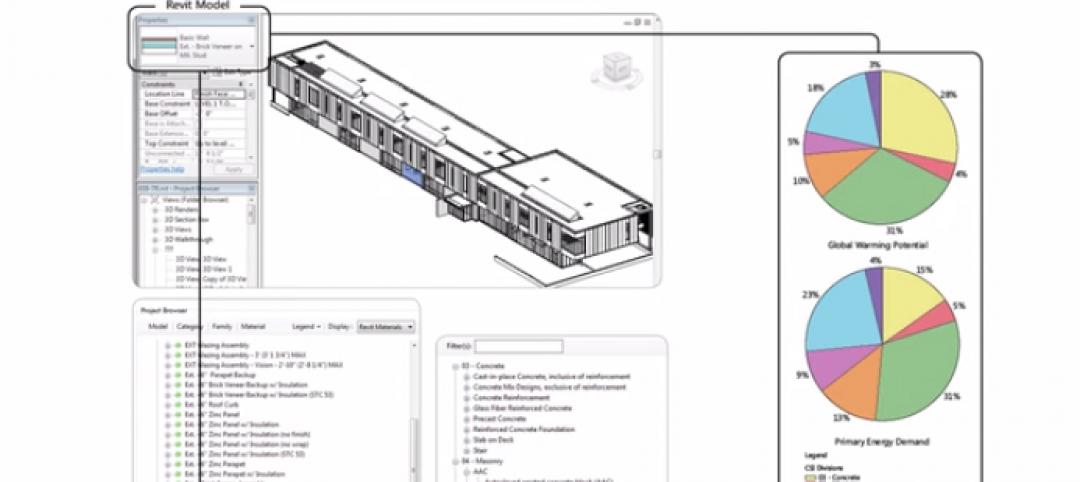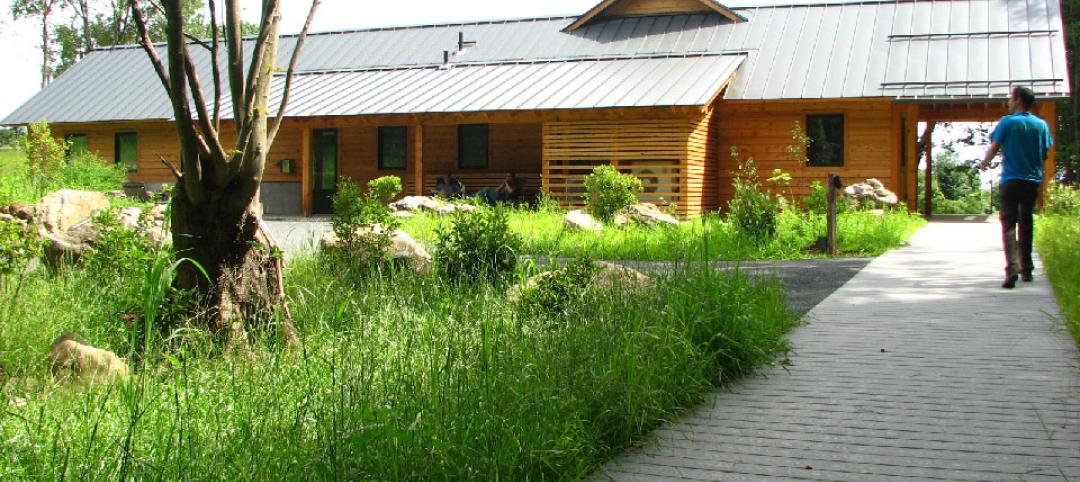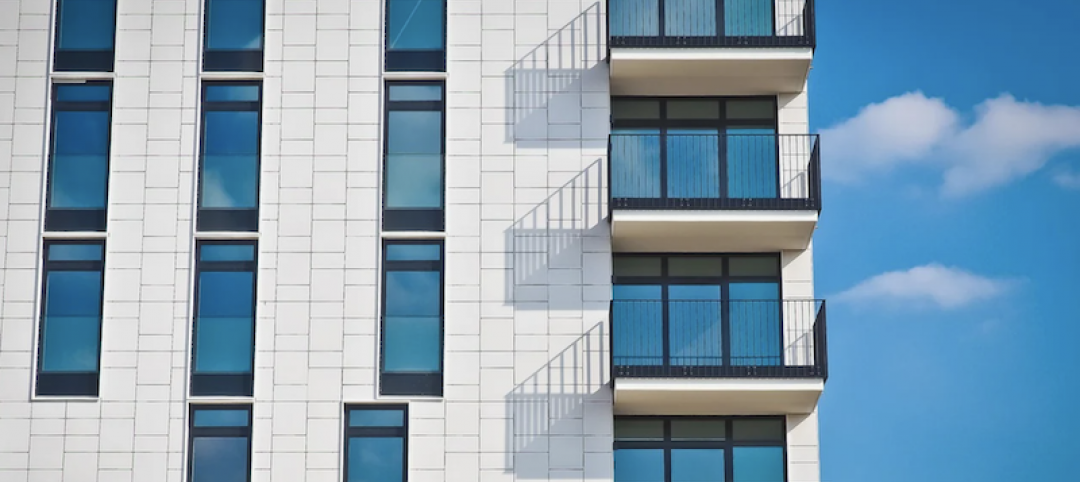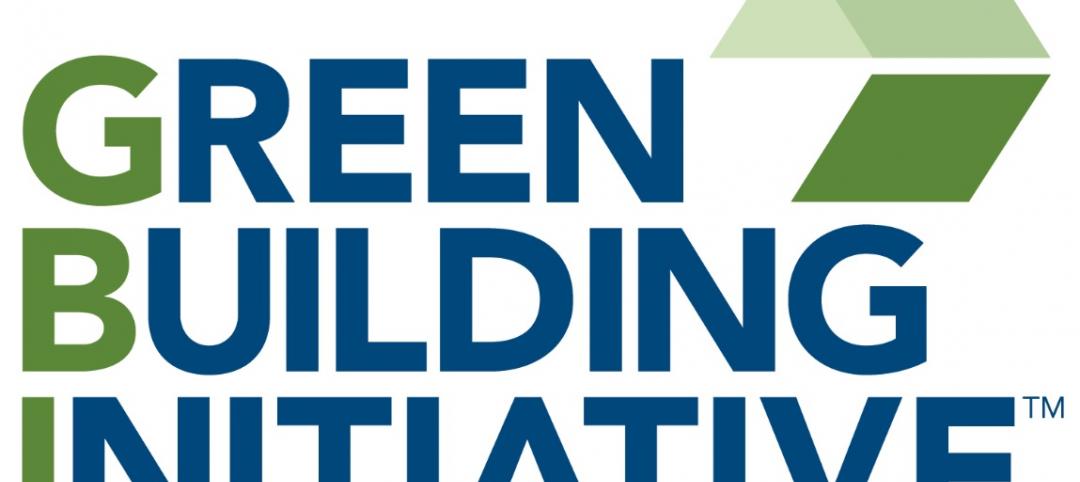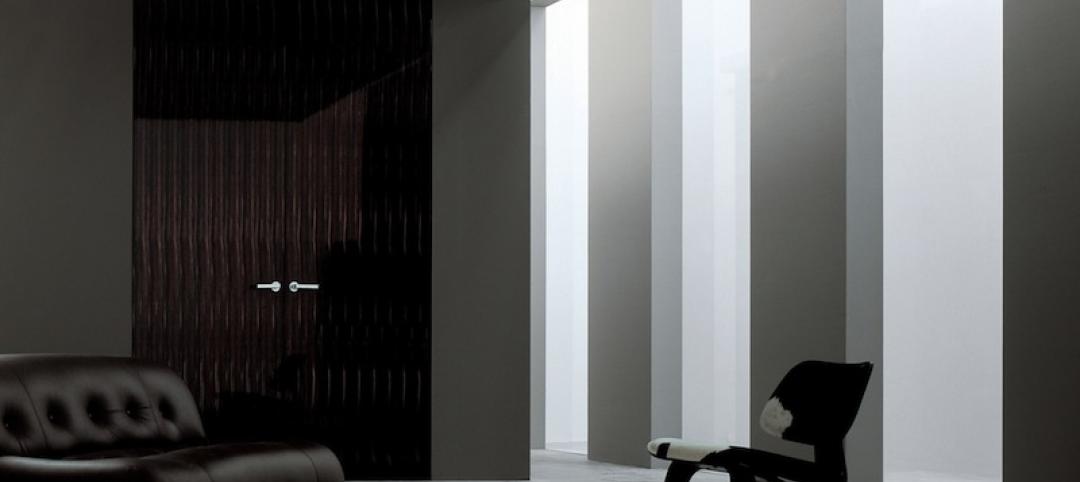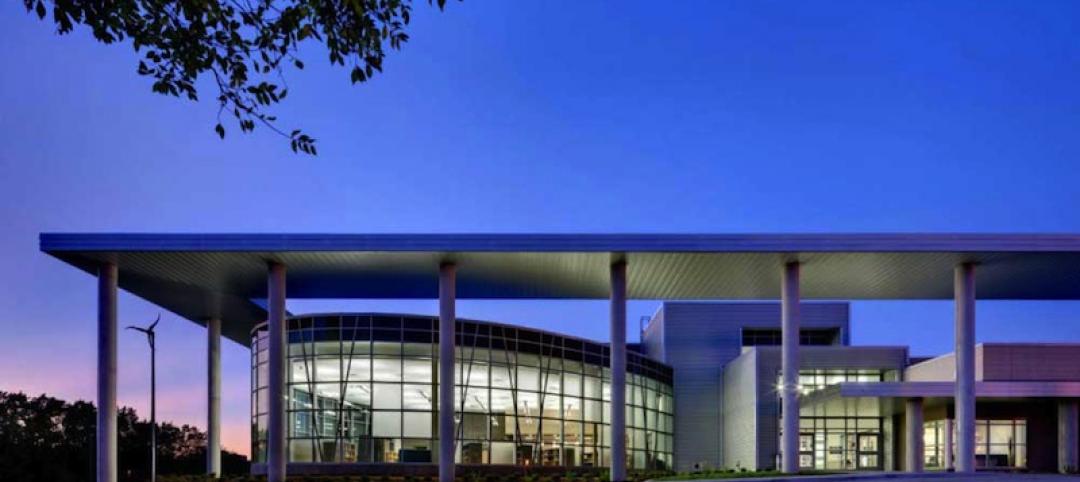 |
| A 12th floor footbridge connects the Center for Life Science | Boston to Children’s Hospital |
In the market for state-of-the-art biomedical research space in Boston's Longwood Medical Area? Good news: there are still two floors available in the Center for Life Science | Boston, a multi-tenant, speculative high-rise research building designed by Tsoi/Kobus & Associates, Boston, and developed by Lyme Properties, Hanover, N.H., and BioMed Realty Trust, San Diego.
The 777,600-sf private-sector research complex at 3 Blackfan Circle is 95% leased, but the second floor (45,000 sf) and the 18th (25,000-sf ) are open, and you'll be in good company. Tenants include a who's who of the Boston medical and research community: Beth Israel Deaconess Medical Center, Children's Hospital Boston, the Dana-Farber Cancer Institute, the Immune Disease Institute, and the Kowa Company. Oh, and to sweeten the deal, the building earned LEED Gold certification.
A high-rise research lab? And a wet lab facility with LEED Gold certification? In downtown Boston, rather than Cambridge, MIT's and Harvard's backyard?
 |
| Inside, lab-ready research spaces were fit out by tenants, including the Dana-Farber Cancer Institute. |
“We've done a number of spec properties before, mainly in the Cambridge market,” says David Clem, managing director of Lyme Properties, the project's original developer before BioMed Realty Trust purchased the building during construction. “This was our first significant building in Boston, and I'd been looking for the right site for about 15 years.”
What took so long was that Clem was adamant the project be located in the Longwood Medical Area—specifically, in the Blackfan Research District, one of nation's hottest centers of research activity. “My strategy was to locate within 500 yards of all the institutions driving the research,” says Clem, who knew the area's numerous research and medical institutions were anxious for additional research space.
Unfortunately, the Longwood Medical Area was so densely built that available land was basically nonexistent, so when Clem learned through social connections that a private school smack dab in the middle of Longwood was relocating, Lyme Properties quickly snapped up the one-acre site and began developing the project back in 2001.
 |
| Tsoi/Kobus & Associates designed the building’s public spaces, including the two-story entrance lobby, and about half the tenant fit-outs. The firm also designed a second-floor footbridge (not visible in this photo) connecting the second floor with neighboring Beth Israel Deaconess Medical Center. |
There was one problem, however: no one on the Building Team had worked on a project quite like this one. “We've all done spec lab buildings before,” explains Rick Kobus, FAIA, senior principal at Tsoi/Kobus & Associates, of the Building Team's collective experience, “but we hadn't done a high-rise spec lab building, we hadn't built one over 750 parking spaces, and we hadn't built one using an up-down construction technique.”
Other unknowns: how many tenants would occupy the building, how large or small their spaces would be, and how their spaces would be used. “This market hadn't been tested,” says Kobus. The process of figuring out the physical dimensions of the what, why, and how of the project resembled a jigsaw puzzle, as architect and developer pieced together various combinations. Would there be multi-floor tenants? What about half-floor occupancies? What were the implications of the many lease configurations for mechanical space and shaft space?
In they end they concluded that, for the building to work, tenants would have to lease a minimum of a full floor. To accommodate a mix of tenants requiring smaller or larger spaces, the building was designed with two basic shell floorplates: floors 2-12 are L-shaped plans offering roughly 45,000 sf, while floors 14-18 are rectangular plans offering roughly 25,000 sf. (Only two tenants occupy a single floor, and those who do lease the larger floors.)
 |
| This lounge is part of the Immune Disease Institute’s lab space. IDI is a nonprofit research and educational institution that’s affiliated with Harvard Medical School and receives about $38 million in annual support. |
The fact that there even are 18 floors to configure is unusual because building codes typically limit the use of high-hazard materials above 65 feet. “There's a strong motivation to keep research buildings lower, so there probably won't be another high-rise building like this, at least not in Boston,” says Kobus.
The building's architecture played a key role in why the project was allowed to reach high-rise status. Before the Center for Life Science | Boston was built, virtually every building within the Blackfan Research District (which accounts for more than three million sf of biomedical research space) had a uniform 12-story building height—for no other reason than that's just the way it was always done. “When we looked at putting another 12-story building in there, we thought the urban design character of the space was pretty awful with an unbroken, 12-story-high wall of building stretching more than 1,000 feet,” says Kobus. “We all thought it would be the wrong gesture.”
Instead, they designed part of the $197.2 million building at 12 stories and added a tower portion stretching to 22 stories (18 occupied floors, and four floors of mechanical, including a boiler plant and chiller plant). The Boston Redevelopment Authority liked what they saw and gave its approval to the tower.
 |
| The Dana-Farber Cancer Institute occupies the building’s 11th floor, and this break-out space is part of its 45,000-sf of research space. The Institute’s facilities are split roughly 50/50 between wet/dry labs, with approximately 100 researchers working in the Center for Life Science | Boston. |
The building's height isn't the only reason its architecture stands out. “We wanted a building that expressed the high-tech science going on inside,” says Kobus who designed a building where exterior walls slant and curve and are wrapped in a high-efficiency curtain wall. Kobus refers to the corner tower as a modern-day campanile that marks the center of research activity in the Longwood Medical Area.
Interior architecture was a different story completely. “We knew we wouldn't be the architect for all the tenant fit-outs, so we had to create a simple plug-and-play framework that other architects could easily utilize,” says Kobus. That lab-ready framework includes dedicated connections for exhaust fans, back-up emergency electric, pH neutralization systems, and dedicated shaft space, among other things. Extra-high ceiling heights of 15½ feet make it easy to accommodate individual HVAC and piping requirements. Tenants also have dedicated storage space on the ground level near the loading dock. Tsoi/Kobus & Associates wound up designing almost half of the tenant fit outs, as well as all tenant common spaces and the building's public spaces.
The Center for Life Science | Boston earned LEED Gold certification, so sustainability also figured heavily into its design, despite the Building Team's limited experience with LEED back in 2001. (See “Green Credentials” for the building's sustainable achievements.) “We had no idea where the project would wind up,” says Sara Mills-Knapp, sustainable design coordinator for Tsoi/Kobus & Associates. “In the beginning we just anticipated LEED certification, not a specific level.”
 |
| A high-efficiency curtain wall brings significant amounts of natural light inside, brightening the reception area for the Immune Disease Institute and helping the 777,600-sf high-rise earn LEED Gold. Tenants were encouraged—but not required—to pursue sustainable fit-outs . |
In fact, when the project began the LEED process, it was as one of the first pilot projects for LEED Core & Shell. “Working as a pilot program was hard because there were no standards,” says Mills-Knapp, but Lyme Properties wanted to offer tenants a higher-performing lab building so the team sorted it out as they went along. Tenants themselves aren't required to build green, but it's suggested they consider it. “If you're building a base building that has such efficient systems, tenants can't help but be influenced,” says Mills-Knapp.
The Building Team applied for several innovation credits when submitting the LEED documentation, and while they didn't get points for the up-down construction, this method proved to be one of the building's key successes. According to Shawn Seaman, project executive at project manager William A. Berry & Son, Danvers, Mass., up-down construction shaved four or five months off the building's construction schedule. That's because the Building Team was able to excavate the site (six floors below-grade, mostly parking) at the same time 22 floors of steel framing were being erected. “The process resembles more of a mining operation than an actual excavation,” says Seaman, who was aided by an early-stage BIM model (this was 2001) to coordinate concrete, structure steel, curtain wall, and MEP work with the Building Team members.
Up-down construction was ideal for this project because the small site is surrounded by buildings on four sides, which severely limited excavation options, but there is a downside. “We don't use this process very often because there's a cost premium to doing it this way,” says Seaman. “In this case, however, time was money so we wanted to get the building up quickly and get tenants moved in.”
Despite all the unknowns the Building Team figured out along the way, they created a state-of-the-art research facility that opened in 2008 and is 95% leased, earned LEED Gold, and sold for a record price of more than $1,000 per sf when BioMed Realty Trust purchased the property from Lyme Development soon after construction began.
Related Stories
| Apr 23, 2014
Mean and Green: Top 10 green building projects for 2014 [slideshow]
The American Institute of Architects' Committee on the Environment has selected the top ten examples of sustainable architecture and ecological design projects that protect and enhance the environment. Projects range from a project for Portland's homeless to public parks to a LEED Platinum campus center.
| Apr 11, 2014
ULI report documents business case for building healthy projects
Sustainable and wellness-related design strategies embody a strong return on investment, according to a report by the Urban Land Institute.
| Mar 19, 2014
Green Building Initiative Invited to White House Rural Council Event to Support Growth of Green Building, Jobs, and Rural Communities
Green Building Initiative (GBI) Vice President for National Affairs Erin Schaffer is participated in an event at the U.S. Department of Agriculture headquarters on Tuesday, March 18th, designed to highlight the Obama Administration’s commitment to promoting building construction projects that use green materials, while also supporting jobs in rural communities.
| Mar 10, 2014
Meet Tally – the Revit app that calculates the environmental impact of building materials
Tally provides AEC professionals with insight into how materials-related decisions made during design influence a building’s overall ecological footprint.
| Feb 17, 2014
GBI to Offer AIA Approved Course Free for 60 Days to Train New Green Globes Professionals
The Green Building Initiative™ (GBI) announced today that between Feb. 13 and April 15 it will provide free access to its online certification course for Green Globes Professionals™ (GGPs). GGPs help guide building projects in achieving Green Globes® ratings, awarded for environmentally-focused design and construction.
| Feb 4, 2014
World's fifth 'living building' certified at Smith College [slideshow]
The Bechtel Environmental Classroom utilizes solar power, composting toilets, and an energy recovery system, among other sustainable strategies, to meet the rigorous performance requirements of the Living Building Challenge.
| Jan 8, 2014
New materials should help boost sustainability in cities by 2020
Newer developments include windows made with nano-crystals that control intense heat penetration while lighting living areas from the outside.
| Jan 6, 2014
Green Building Initiative names Jerry Yudelson as new President
The Green Building Initiative announced today that it has named Jerry Yudelson as its president to accelerate growth of the non-profit and further leverage its green building assessment tools, including the highly recognized Green Globes rating system.
| Dec 26, 2013
WDMA launches project to create ISO-compliant architectural doors
WDMA's National Architectural Door Council has initiated a project to create ISO-compliant Product Category Rules for architectural wood flush and stile and rail doors
| Dec 17, 2013
Nation's largest net-zero K-12 school among winners of 2013 Best of Green Schools award
The Lady Bird Johnson Middle School in Irving, Texas, was named a winner of USGBC's annual award, along with nine other schools, individuals and communities working toward the common goal of healthy, high-performing learning places.


